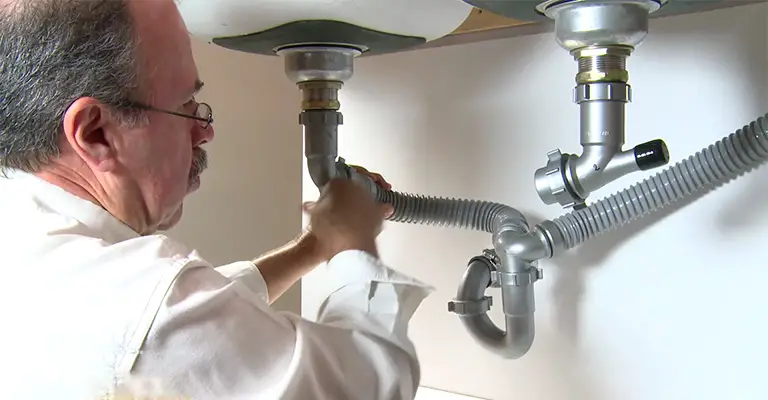There are usually multiple plumbing fixtures in bathrooms and running individual drain lines from each fixture to the house’s main sewer line is inconvenient and costly.
The plumber instead connects drain lines under the bathroom floor and installs a standard vent to allow waste and water to drain. Toilets have the largest drain pipes, so sink smaller drains will empty into toilet drain lines.
Are Sink, Shower, And Toilet Drainage Pipes The Same?
Yes, most of the time. However, their diameters may differ at the connection points to those fixtures. It is possible to use the same material for all.
It may be mixed types of pipes, such as stainless steel, cast iron, or PVC (of different types), but they eventually connect to the same pipe, which goes to the sewer system or to your septic tank.
The number of people who don’t know this is amazing to me. It is sometimes necessary to drain “grey water” separately in rural areas.
Grey water is water from a bath or sink instead of black water from a toilet or a sink. Some people use grey water to water plants, while others simply drain it on the ground.
A black line and a gray line are separated in those cases. Gray and black waste systems are usually separated on RVs, including separate holding tanks.
How Sinks And Toilets Share The Same Drain
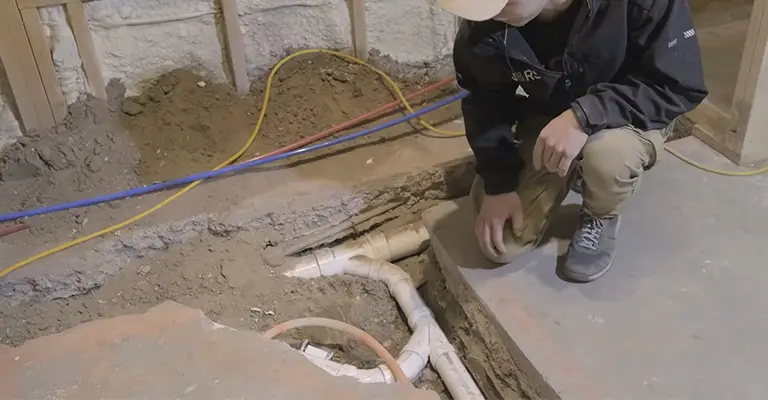
Your house’s drains empty their contents into a familiar place called a sewer. Both the toilet and the sink drain fall under this category. Sewers collect and transport wastewater to sewage treatment plants where it is treated.
Remember that your building contractors or expert plumbers may have no choice but to combine your toilet and sink drains in your compound if the sewer is located a considerable distance from your home.
It is important to remember that the toilet drain is larger than the sink drain, so the expert will install a common vent that makes it easier for the sink water to drain into the bigger toilet drain without causing an airlock.
Backflow of wastewater can be caused by an airlock, something you must avoid at all costs.
The Sink Drain
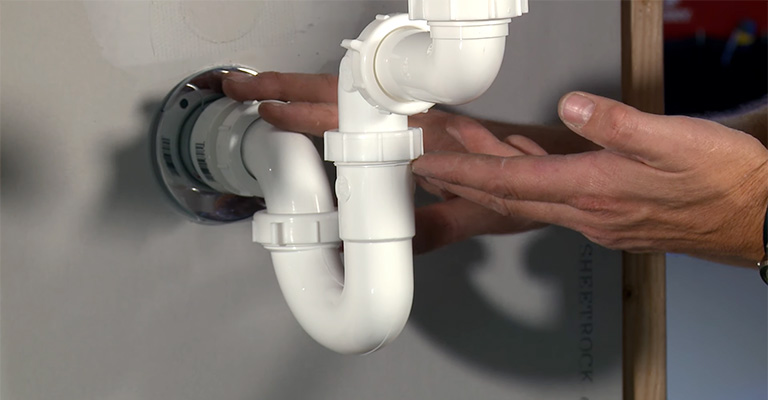
Step 1
The drain stub underneath the sink should be equipped with a 2-inch sink trap assembly. Two washers on each end of the trap slip over the connecting pipes and tighten the connection. These connections should not be glued.
Step 2
At the bottom end of the trap assembly, attach a horizontal PVC pipe. To connect to another 2-inch vertical pipe, this pipe should reach the stud space behind the sink.
Step 3
Connect the horizontal sink drainpipe to the vertical drainpipe using a 2-inch sanitary-T fitting. Water drains downward from the vertical drainpipe.
And the upper portion of the pipe connects to the house’s main vent stack. Water locks may form in the drain system without the upper vent portion of the pipe. In addition to serving the sink, the sink vent also serves the toilet.
Step 4
Connect the 4-inch drainpipe from the lower sink to the 3-inch drainpipe that runs from the toilet using elbows or collars as necessary.
In general, the configuration of your sink drain will depend on the layout of your bathroom and the direction of the floor joists, but, if possible, it should be connected within 6 feet of the toilet drain.
The Toilet Drain
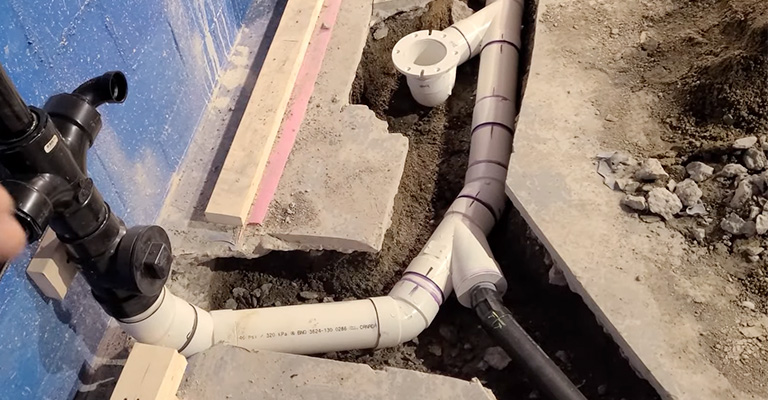
Step 1
The toilet flange is located on the floor where the toilet will sit. Connect a 3-inch closet bend to the bottom.
It consists of 90-degree elbows that connect the flange to a drainpipe that runs between the floor joists at a 90-degree angle. As toilets have built-in traps, you do not need to install a trap beneath them.
Step 2
Using a horizontal 3-inch drainpipe, attach the closet bend’s open end to the drainpipe. To reach the house’s main sewer line, the drainpipe runs horizontally until it descends.
In general, pipes should slope at about 1/4 inch per linear foot; the pipe is not perfectly horizontal. It is not always better to have a slope since liquids can outrun wastes, leaving them stuck in drains.
Step 3
Whenever connecting PVC pipes and fittings without threads, use PVC prep liquid and adhesive according to the label directions.
How To Connect A Sink Drain To A Toilet Drain
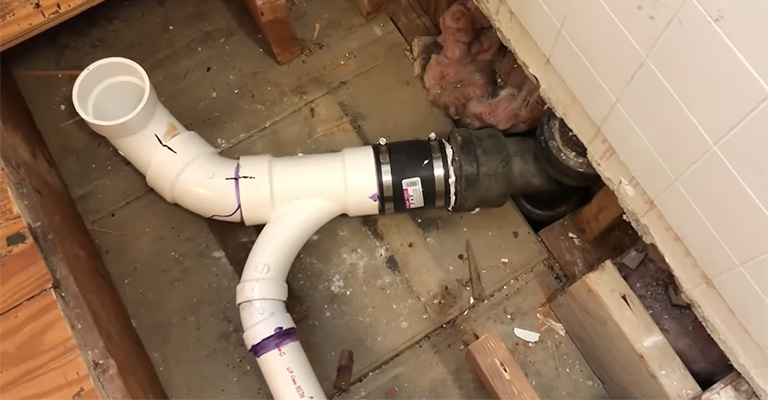
Step 1
You can connect the sink drainpipe to the toilet drainpipe using a sweeping-Y connector that fits between 2 inches and 3 inches.
To prevent backflow, the sink drain should extend upward from the horizontal drainpipe by two inches, allowing it to enter the toilet drain from above.
Step 2
Tie the 2-inch sink drain to the 3-inch drainpipe using the PVC prep liquid and PVC glue and cut a section from the 3-inch pipe.
Step 3
To test the pipe connections, flush the toilet and fill the lines with water before attaching the 3-inch drainpipe. If a connection leaks, this is the best time to discover it.
Is It Possible To Share A Drain Between Two Toilets?
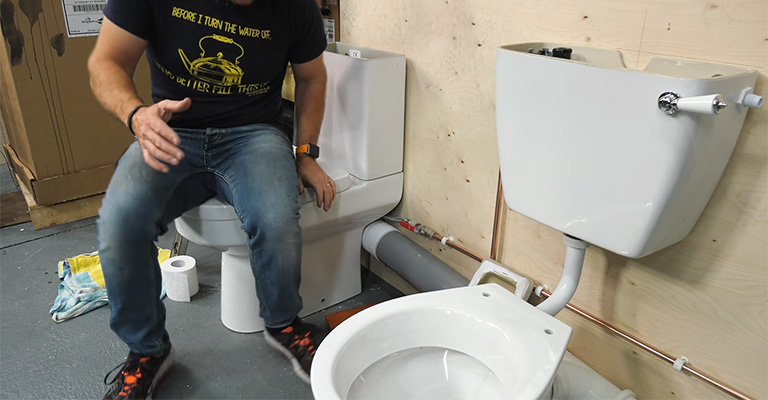
Most toilets and sink drains are emptied in a common area alongside the bathroom and sink drains in most homes and hotels. There is no problem if the toilets are located on the same side of the building and share the drain.
However, to quickly vent and direct the waste to the sewer, you’ll need two drains if they’re on opposite sides. Y connectors prevent backflow by connecting toilet drains back-to-back.
Do Sink and Toilet Have to Match?
Whenever the sink drain and toilet drain match, it’s easy to combine them. This way, you can prevent airlocks and encourage the combined wastewater to be disposed of through the sewer system.
There is no requirement for the two drains to match, however. For example, it is possible to have the toilet drain larger than the sink drains and not vice versa, so the combined wastewater flow can be effectively handled without bursting.
Is It Possible To Share A Drain Between Two Sinks?
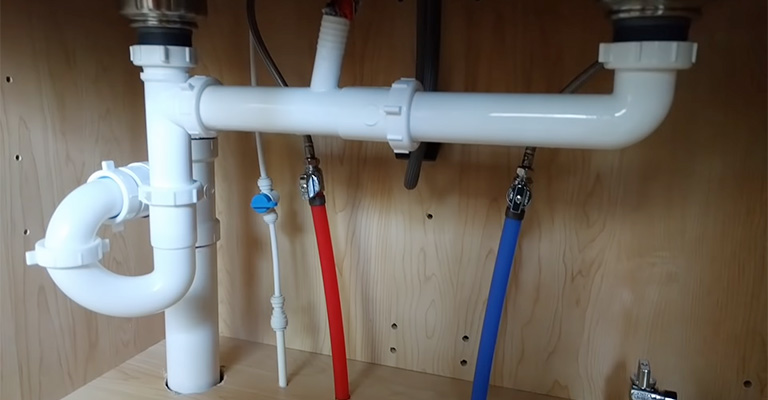
With the help of special valves and pipes, it is possible to connect two sinks to the same drain system. There may, however, be a need to vent the sinks separately to prevent airlocks and backflows of wastewater.
Is It Possible To Put A Toilet Where The Sink Is?
Considering that all your drain pipes are connected to a shared network, you can rearrange them to suit your needs.
As a result, you can swap the sink with the toilet. A plumbing expert may be necessary if you do not have the technical know-how to handle the job.
Is There A Connection Between Toilet Drains And Kitchen Sink Drains?
You have a network of pipes connecting all the drains in your house to a common place (sewer).
You are indeed connected to the toilet drain and the kitchen sink drain. There’s no need to install two separate drains, which can be expensive.
Are Toilets And Sinks Connected By The Same Drain?
Normal toilets and sinks have separate drains that empty into a common drain (the sewer). However, combining the two drains is more economical nowadays, so homeowners prefer to combine the two drains.
It is important to install a common vent first to prevent airlocks. An airlock usually causes a backflow of wastewater.
Do Sink and Toilet Water Go to The Same Place?
Septic tanks or sewers collect all wastewater in your home. The kitchen and bathroom sink water, as well as the water from the toilet, falls into this category.
Can A Toilet and Sink Share a Vent?
Due to the difference in pipe diameter, airlocks can form when toilet and sink drains are combined, causing wastewater backflow.
A common vent, however, can prevent that from happening. Shared drains allow the toilet and sink to be used together.
Can A Tub and Sink Share the Same Drain?
There is usually a common drain pipe between bathtubs and sinks. Hotel rooms and homes are often affected by this problem. In addition, an airlock can cause a backflow of wastewater if the connection is not made expertly.
Warning & Tips
You may need to install separate vents on the toilet drain line closer to the toilet if the sink drain cannot be connected to the toilet drain within 6 feet.
Clogs are more likely to occur if you have a long distance between the sink and the toilet. However, there will still be a need for a separate vent pipe for the sink.
You should hand-tighten the washers connecting the sink trap to the sink and the drain pipe. The PVC threads can break and leak if channel locks are overtightened.
Connect the 2-inch vent pipe that extends upward in the stud space behind the sink to the main vent stack in the attic. Most main stacks have a diameter of four inches and exit through the roof.
Final Words
You might be able to share a drain between a sink and a toilet if both pipes are large enough to transport the combined flow and if the two pipes are perfectly matched, and if a common valve is used within 1.5 meters.
Water that bursts off from the toilet pipe and causes leaks must be contained as much as possible by the toilet pipe so that the combined flow (toilet and sink wastewater) will not burst.
Additionally, you should install a common vent to prevent wastewater backflow caused by airlocks. Generally, you have to adhere to the 1.5m radius due to building regulations.

